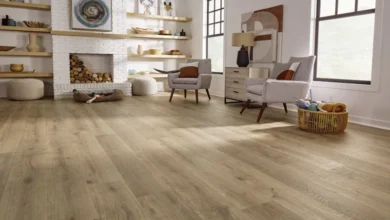
Gravilla para Jardín: A Smart Choice for Modern Landscaping
Modern landscaping is shifting toward sustainable, low-maintenance, and visually appealing designs. Among the most versatile materials gaining attention in this trend is gravilla para jardin
garden gravel. This natural element is not only functional but also adds elegance and texture to any outdoor space. Whether you are creating garden paths, accent borders, or full decorative beds, gravilla offers endless possibilities.
Understanding Gravilla para Jardín
Gravilla para jardín refers to small crushed stones or pebbles used in landscaping to cover surfaces, define areas, and enhance the garden’s overall appearance. These stones come in various colors, shapes, and sizes, making them highly customizable. Common gravilla types include river pebbles, crushed granite, limestone chips, and volcanic rocks.
Why Choose Garden Gravel?
Using gravel in a garden isn’t just about appearance—it also delivers practical benefits that contribute to a well-balanced outdoor environment.
Excellent Drainage
This feature is especially useful for preventing puddles and managing excess rain, making it ideal for wet or sloped areas.
Weed Control
When installed properly over landscape fabric, garden gravel acts as a barrier against weeds. This minimizes the need for chemical weed killers and saves time on garden maintenance.
Minimal Maintenance
It’s a long-lasting solution that stays attractive year-round with little effort.
See also: Transforming Homes with Excellence: Palm & Pineapple Roofing and Exteriors
Types of Gravilla to Use
Selecting the right type of gravilla is crucial for achieving the desired look and functionality in your garden.
Pea Gravel
Their natural finish complements plants and garden furniture, while their texture is gentle underfoot.
Crushed Stone
Angular gravilla like crushed limestone or granite provides a more solid and compact surface. It is ideal for walkways and borders due to its interlocking quality.
River Rock
Larger, polished stones work well as decorative accents around trees, ponds, or flower beds. Though not ideal for walking surfaces, they add a natural riverbed look to any garden.
Lava Rock
Volcanic stones are lightweight, porous, and available in unique colors like deep red or black. They work well in desert or tropical-themed gardens.
Practical Uses in Garden Design
Gravilla para jardín can be used in many creative and practical ways. Here are several popular applications:
Garden Paths
Create defined walkways between flower beds or across the lawn using gravilla
Around Plants
Placing gravilla around plant bases prevents soil erosion, retains moisture, and reduces weeds. It also creates a clean, finished appearance.
Decorative Borders
Use gravel to edge flower beds, lawns, or patios. This creates visual separation and enhances the structure of your garden layout.
Rock Gardens
Gravilla is an essential component in rock gardens. It fills the spaces between larger stones and succulents, creating a serene and organized design.
Drainage Zones
In areas where water tends to accumulate, gravel can improve drainage and prevent root rot. Combine it with proper slope grading for best results.
Installation Guide
Proper installation is key to ensuring the longevity and effectiveness of gravilla para jardín.
Step 1: Define the Area
Mark out the area where the gravel will be applied. Use garden hoses or stakes and string to shape paths or beds.
Step 2: Clear the Ground
Remove all grass, roots, debris, and soil to a depth of about 4 inches.
Step 3: Add a Weed Barrier
Lay a layer of landscape fabric across the prepared ground. This helps stop weeds from growing through the gravel while still allowing water to pass.
Step 4: Add a Base Layer
In high-traffic areas like paths, add a layer of compactable crushed stone or sand underneath the final gravel layer for added stability.
Step 5: Pour the Gravilla
Spread the gravilla evenly across the area, maintaining a consistent thickness of about 2–3 inches.
Maintenance Tips
Although low-maintenance, your gravel garden will benefit from occasional care:
- Add More Gravel: Over time, gravilla may settle or scatter. Add fresh material as needed.
- Clean Debris: Remove fallen leaves or dirt using a leaf blower or hand tools.
- Check Weed Barrier: If weeds appear, inspect the landscape fabric and reinforce or replace it if necessary.
Matching Gravilla with Garden Styles
Here’s how to match it with specific themes:
Mediterranean
Use warm-toned gravilla like golden crushed stone, paired with terracotta pots and lavender or olive plants.
Modern
Choose monochrome gravel such as black basalt or white marble. Combine it with clean lines, minimal greenery, and modern planters.
Japanese
Use fine gray or white gravel in raked patterns alongside bonsai, bamboo, or water features for a tranquil Zen garden.
Desert
Pair red or brown lava rock with cacti, succulents, and wooden features for a bold and water-wise look.
Where to Buy Gravilla para Jardín
You can purchase gravilla from landscaping suppliers, garden centers, or building material stores. Many offer bulk delivery services, which is practical for larger projects. Always verify stone size, type, and color before purchasing to ensure it matches your garden’s design.
Final Thoughts
Whether you’re enhancing a small garden corner or redesigning your entire landscape, gravilla para jardín is a valuable addition. It combines beauty, functionality, and sustainability in one versatile material. From garden paths to decorative accents, gravilla adapts to any style and climate. With simple installation and minimal upkeep, it’s an ideal choice for anyone looking to elevate their outdoor space while keeping things natural and easy to maintain.



